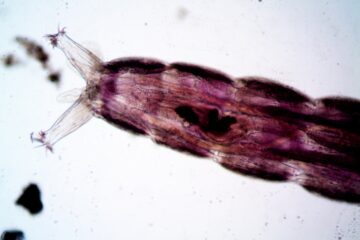![]()
Introduction
Forensic science is the application of science and scientific methods to criminal or civil legal investigation. It is used to collect, analyse and examine the evidence to decide whether it admissible according to the legal standards. It is a broad field consisting of other areas such as toxicology, pathology, anthropology, Jurisprudence, Odontology etc. Forensic scientists perform such collection and examination of evidence. They perform a crucial role in finding important data relating to the case and also act as witnesses before the courts of law. It can help proving the guilt or innocence of the accused. The techniques of forensic science include Narco-analysis, Polygraph Test, Brain Mapping, Paternity test, Fingerprints, DNA Profiling etc.
Time and again, these techniques have proven to be extremely useful. For example, in the case of Anthony Arikswamy Joseph vs State of Maharashtra[1], thorough the technique of DNA profiling, the accused was convicted and punished with death sentence for the gruesome murder of a 10 year old boy after subjecting him heinous rape and strangulating him to death. Further, in the case of Vishal Yadav vs State of UP[2], the identification of victim was difficult due to the entire body being burnt leaving only one intact palm with fingers. DNA profiling of the body remains with the parents of the victim helped in identifying the body. This led to Delhi High Court upholding the conviction of the guilty.
In the judgement of the State of Bombay vs, Kathi Kalu Oghad[3], the court decided that the methods of specimen signature, thumb impression, blood, semen, hair, tissues by the accused do not lead to him being a witness against himself as mentioned under Article 20(3) of the Constitution of India. Hence, the accused cannot refuse to DNA examination for the investigation and criminal trial. In another significant judgement Ramachandra Reddy and Others vs. State of Maharashtra[4], the court upheld the legal validity of the use of Brain fingerprinting or P300, lie detector test and the use of narco analysis or the truth serum.
Forensic Anthropology
Forensic Anthropology is a special sub-field of forensic science and has various applications to it. However, a large part of physical anthropology focuses on skeletal system. Forensic anthropology uses various techniques of physical anthropology in order to examine and analyse bones and parts of decomposed skeletal remains. It facilitates identification of the body which can be used in the investigation of a case. Forensic anthropology can help unravel the age, sex, time, how long the body has been decomposing, unique features and trauma subjected to the body. Hence, forensic anthropologists collaborate with the law enforcement and other forensic professionals. They also act as expert witnesses in criminal trials.[5]
Criminalistics
It is a sub-field of forensic science. However, the term forensic science and criminalistics are often used interchangeably. It has a similar definition to forensic sciences as both provide a scientific evaluation of evidence for the legal investigation. The American Board of Criminalistics defines the term Criminalistics as the scientific study or profession directed to recognition, individualization, identification and examination of physical evidence by applying the physical and natural sciences to matters of legal situations. The California Association of Criminalistics gives a slightly different meaning. According to them, it is a professional occupation related to scientific analysis, interpretation and presentation of physical evidence in the court of law.[6]
Forensic Engineering
Forensic engineering is usage of concepts of civil, chemical, mechanical engineering for the reconstruction of a crime or accident scene and to determine the cause of such accident. It also tries to determine the cause of failure of a machine or structure and identify the roots of the damage caused. It uses reverse engineering to find out the reason behind such damage or failure of the machine, structure or property concerned. A major use of forensic engineering is in the reconstruction of traffic accidents. It uses factors such as damage to cars, skid marks, position after the accident, environmental and road conditions, injuries to the driver and passengers and so on.[7]
Jurisprudence
Forensic jurisprudence deals in the legal aspects of the admissibility of scientific evidence in the court of law. The experts of the field, who are mainly lawyers, study and evaluate the validity and status of scientific evidence and also study new forms of evidence. They examine the role of forensic science in the criminal justice system. They ensure that the evidence is admissible in civil and criminal courts and meet the standards according to the legal provisions.[8]
Forensic Odontology
A similar or more familiar term for Forensic Odontology will be forensic dentistry. It is very useful and reliable in the identification of bodies from their dentition, especially in cases where the body is very badly damaged as a result of some mass disasters, airplane crashes, fire outbreaks and wars. In case of damage to the fingerprints and usable DNA, dentition can be used to obtain information as it is very difficult to damage even in case of massive disasters. The forensic dentists also play an important role in analysis of injuries to the face. They can identify whether the injury was inflicted upon the victim or was the result of an accident. Bite marks can also help identifying the perpetrator or the victim. This is because each person has unique teeth in case of their overall bite surfaces. Hence, it can lead to the identification of the guilty.[9]
Forensic Pathology
The forensic pathologist determines the manner and cause of death, in case of suspicious situations. They conduct preliminary investigation from the crime scene and also chalk out an estimate of the time since death. They also direct the death scene investigators in the careful handling of the body and conduct postmortem investigations. The autopsy report consists of crucial evidence such as injury patterns, poisoning or presence of a disease which may help the investigators determine the cause of death. The pathologists work closely with toxicologists who take tissue samples and determine the substances present inside the body which may be the result of death. Forensic pathologists work with entomologists, anthropologists, and criminal investigators to draw relevant conclusions regarding the manner and causes of death. The pathologist also provides opinions regarding the manner and cause of death in court.
Forensic Entomology
The forensic entomologist examines the foreign entities such as insects visiting the corpse, especially if it is left outside. Many types of insects will infect a corpse and inhabit it often to feed on the body. The entomologist determines the postmortem interval by evaluating the type of insect population inhabiting the body. Certain insects inhabit the body right after death, others visit when the body is decayed. Knowledge about such insect behaviour can determine the timing of the death of the person.[10]
Toxicology
Forensic Toxicology analyses and identifies drugs or other poisonous substances in the body. It is the application of analysis to cases where death or harm has been caused by toxic and poisonous substances. Toxicologists commonly examine cases of drugged or drunk driving. They measure the quantity of alcohol in blood and determines whether it is suitable for the person to drive or not. Toxicologists also look into cases of drug overdose which may have caused death. They examine the finfings and determine the role of the drug in a person’s death. In case of ingestion of multiple drugs, the toxicologists work with the forensic pathologists to interpret the interaction between the substances and how that may have resulted in death.[11]
Question-Document Analysis
Question-document examination most commonly involves handwriting analysis. This is to determine whether a person is the author of the questioned document. This is done through a handwriting sample. There are a number of characteristics that must be present in order to hold a person as author of the document. Through chemical analysis, documents with writings which have been destroyed, charred, obliterated, erased are recovered. The age of the ink or the document can also be monumental evidence looked into by forensic scientists of this category.[12]
Psychiatry and Behavioural Science
The scientists belonging to this category determine whether a person is sane enough to stand trial and defend himself. One of the area looked into by the scientists of this field is Psychological profiling and tracking similar patterns in criminals. This helps in identifying criminals with such previous record. It is also used to detect lies using the polygraph test.[13]
Conclusion
Foreign science is very critical to criminal investigation without which it is incomplete or may end up being inaccurate. The role of forensic evidence in criminal trials is widely recognized by the legal system. When scientific methods are used, there is less scope for inaccuracy and bias. Hence, methods such as DNA Profiling and others are so frequently used to determine the admissibility and legal validity of the evidence. The first forensic technique of identification through finger and palm printing dates back to the Chinese in 650 AD. Forensic evidence is widely used worldwide to convict as well as acquit the accused. Thus, without forensic experts, identifying culprits of rape, murder, drug trafficking would be extremely difficult. Proper forensic techniques would ensure that crimes are detected so that conviction rates increase and actual offender is convicted.[14]
References
[1] Anthony Arikswamy Joseph v. State of Maharashtra, Criminal Appeal nos.1419-1420 of 2012.
[2] Vishal Yadav v State of UP, Crl.M.A. No. 2258/2012 in Crl. App. No. 741/2008.
[3] State of Bombay v. Kathi Kalu Oghad, 1961 AIR 1808.
[4] Ramchandra Ram Reddy v. State of Maharashtra, Crl WP No. 1924 of 2003.
[5] National Museum of Natural History, https://naturalhistory.si.edu/education/teaching-resources/social-studies/forensic-anthropology (Last visited June 29, 2022).
[6] Britannica, https://www.britannica.com/topic/criminalistics, (Last visited June 29, 2022)
[7] Market Business News, https://marketbusinessnews.com/financial-glossary/forensic-engineering/, (Last visited June 29, 2022)
[8] Britannica, https://www.britannica.com/science/forensic-science/Jurisprudence, (Last visited June 28, 2022)
[9] University of Maryland School of dentistry, https://www.dental.umaryland.edu/museum/exhibits/online-exhibits/forensic-odontology/, (Last visited June 29, 2022)
[10] ScienceMonk, https://sciencemonk.com/forensic-entomology-the-use-of-insects-in-criminal-investigations/, (Last visited June 28, 2022)
[11] Britannica, https://www.britannica.com/science/forensic-science/Questioned-document-analysis#ref310221, (Last visited June 29, 2022)
[12] Britannica, https://www.britannica.com/science/forensic-science/Questioned-document-analysis, ( Last visited June 28, 2022)
[13] Britannica, https://www.britannica.com/science/forensic-science/Forensic-pathology#ref310218, (Last visited June 28, 2022)
[14] Incognito Forensic Foundation, https://ifflab.org/the-importance-of-forensic-science-in-criminal-investigations-and-justice/, (Last vsiited June 28, 2022)



0 Comments